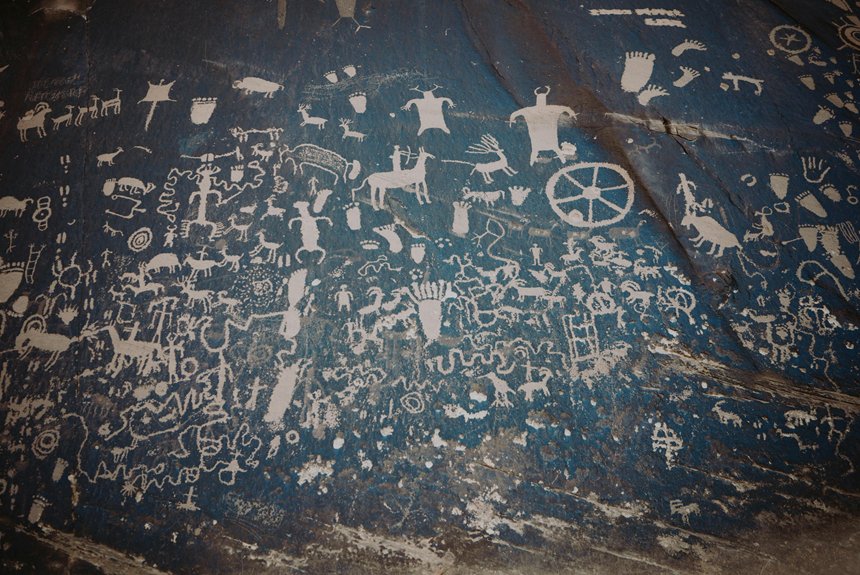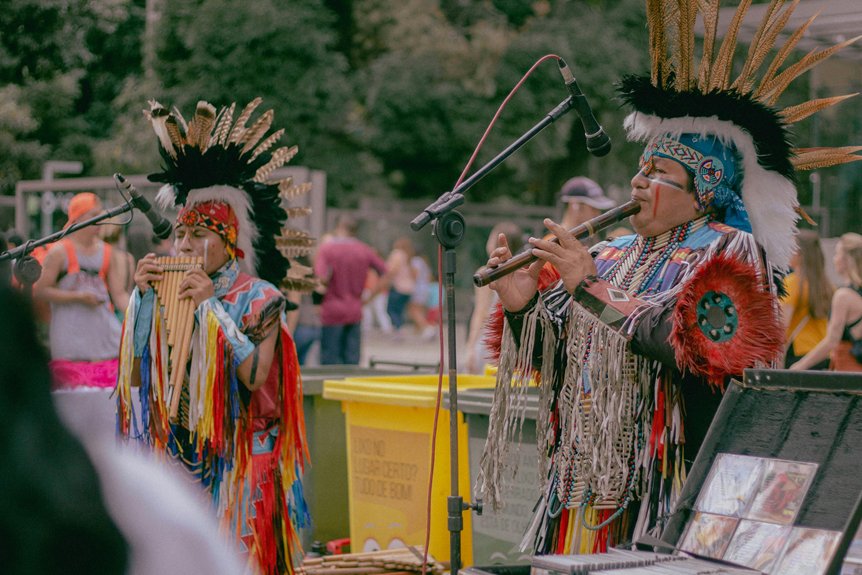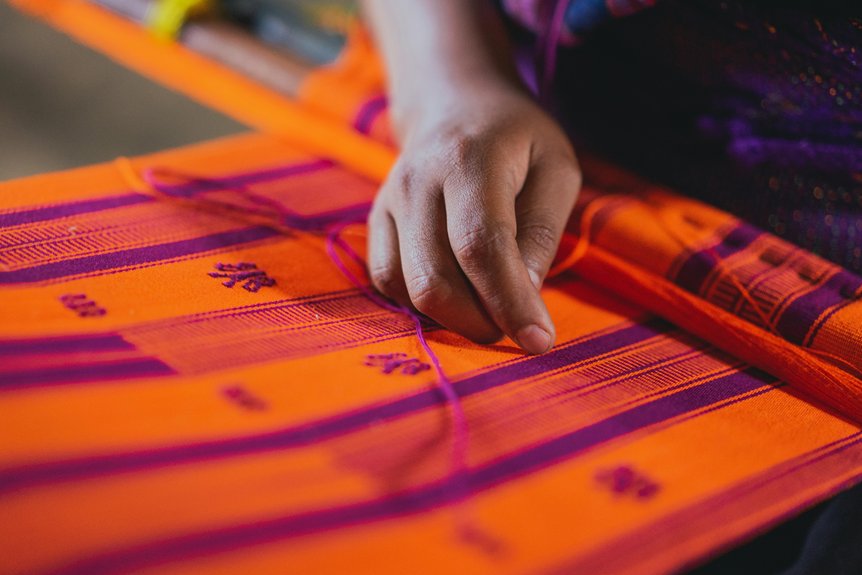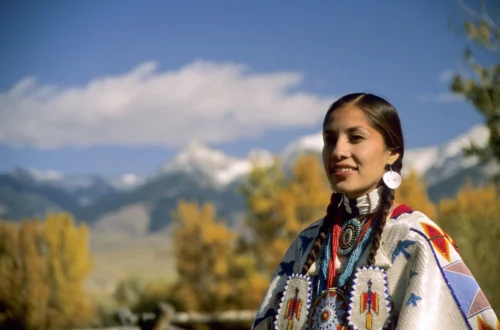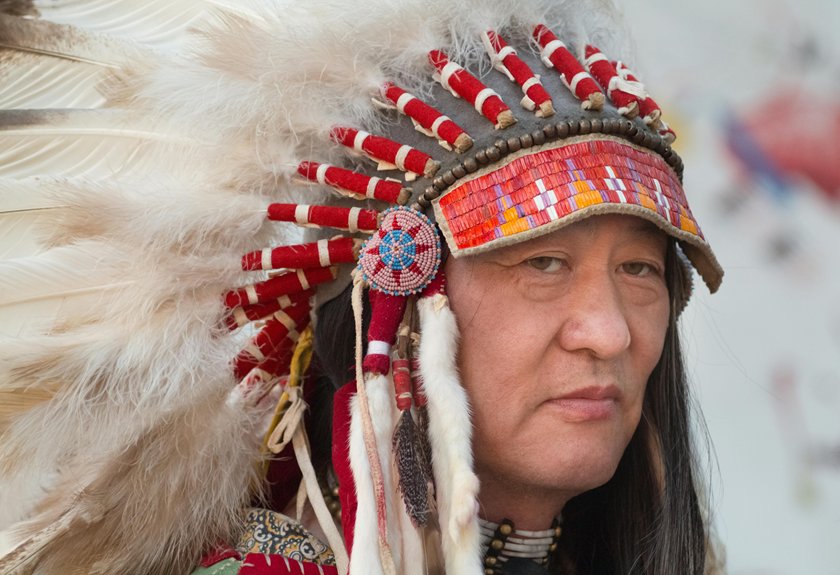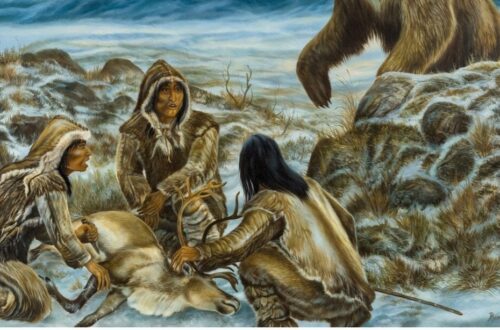Imagine the ancient footsteps of your ancestors crossing a vast, frozen bridge from Asia to North America. This journey, believed to have occurred around 15,000 years ago, set the stage for the rich tapestry of Native American cultures. As you explore the evidence of their adaptability and innovation, you’ll uncover stories of resilience that echo through generations. What might these narratives reveal about the bonds that connect us all to the land and each other?
The Bering Land Bridge: A Pathway to the Americas
Long ago, around 15,000 years ago, the Bering Land Bridge served as a vital pathway for the ancestors of Native Americans to migrate from Asia into North America.
Imagine the vast expanse of land connecting two continents, where diverse tribes traversed, carrying with them rich traditions and knowledge. This journey wasn’t just about survival; it was the beginning of vibrant cultures that would flourish across the continent.
You can envision hunters, gatherers, and families, each step taken with purpose, forging connections with the land and each other. As they settled into new territories, they adapted, nurtured their communities, and formed the foundation of what would become countless Native American nations, each with unique languages, stories, and ways of life.
Archaeological Evidence of Early Settlers
As you explore the rich tapestry of Native American history, you’ll find that archaeological evidence reveals much about the lives of early settlers. Excavations across North America have uncovered tools, pottery, and dwellings that showcase their ingenuity and adaptability.
These artifacts tell stories of hunting, gathering, and agricultural practices that sustained communities for millennia. For instance, the discovery of maize cultivation in the Southwest highlights the settlers’ agricultural innovations.
Sites like Cahokia, with its earthen mounds, reflect complex social structures and trade networks. Each find connects you to the vibrant cultures that flourished long before European contact.
Genetic Studies and Ancestral Links
How do genetic studies illuminate the ancestral links of Native Americans? These studies reveal fascinating insights into the deep history of Indigenous peoples. By analyzing DNA from ancient remains and contemporary populations, researchers trace lineages back to migrations across the Bering Land Bridge.
You find connections not only within Native American groups but also to ancient populations in Asia, showcasing a rich tapestry of human movement and adaptation. These genetic markers help communities understand their heritage, reinforcing shared identities and cultural pride.
Additionally, they challenge misconceptions about Native American origins, emphasizing a complex narrative shaped by resilience and continuity. Ultimately, genetic studies enrich your understanding of the diverse histories that form the foundation of Native American identity today.
Cultural Adaptations Across Diverse Environments
While exploring the vast landscapes of North America, you’ll discover that Native American cultures have adapted remarkably to their diverse environments. From arid deserts to lush forests, these adaptations reflect deep connections to the land.
Here are four examples of how they’ve thrived:
- Hunting Techniques: Tribes like the Lakota developed specialized methods for hunting buffalo on the Great Plains.
- Agricultural Practices: The Pueblo peoples mastered dry farming techniques in the arid Southwest, cultivating crops like corn and beans.
- Housing Styles: In the Northwest, longhouses made of cedar provided shelter, while tipis offered mobility for Plains tribes.
- Spiritual Practices: Many cultures integrated natural elements into their spiritual beliefs, honoring the land’s resources and cycles.
These adaptations illustrate resilience and a profound respect for their environments.
The Impact of Oral Traditions and Histories
Oral traditions serve as the lifeblood of Native American cultures, weaving together stories, histories, and values that connect generations. These narratives shape your community’s identity, imparting wisdom and teachings that guide daily life.
You’ll find that oral histories preserve not only the past but also the lessons learned through triumphs and trials. Elders play a significant role, sharing tales that resonate with cultural significance, fostering a sense of belonging and continuity.
Through storytelling, you engage with your ancestors, keeping their spirits alive. This rich tapestry of oral tradition empowers you to understand your place in the world and promotes resilience in the face of challenges.
